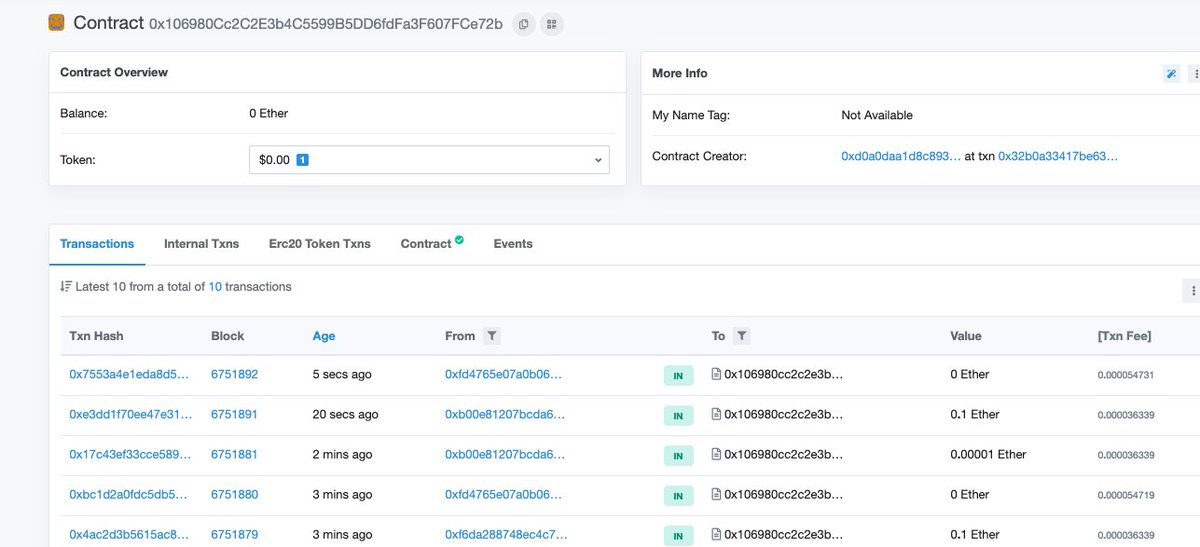
Legacy markets are centralised against a custodial hub, so speed counts to favour those who can scalp the fastest.
However this is irrelevant to a global decentralised market.
Thread on why pursuing speed/latency is a fool's errand for a DEX.
/n
However this is irrelevant to a global decentralised market.
Thread on why pursuing speed/latency is a fool's errand for a DEX.
/n
https://twitter.com/Marcpepe19/status/1325553012669034498
An asset's price is simply net buyers meeting net sellers, and the balance of the two depends purely on information about that asset.
If new information about an asset is found, then the price will change in response to that information.
If new information about an asset is found, then the price will change in response to that information.
How fast the price changes depends purely on how fast information about that asset can propagate across the market participants.
The "real" price of an asset does not change every 5ms. For a 24/7 global market with no centralised hub, price changes should be much slower.
The "real" price of an asset does not change every 5ms. For a 24/7 global market with no centralised hub, price changes should be much slower.
An exchange that can trade at 5ms only encourages centralisation, scalping, front-running and more.
There is no point to having a market that can respond in 5ms, when participants takes minutes, even hours, to absorb new information around the world.
There is no point to having a market that can respond in 5ms, when participants takes minutes, even hours, to absorb new information around the world.
Instead, THORChain encourages "price inertia", slowing down the speed at which an asset's price can change deliberately, as a function of slip-based fees.
In addition, it forces all swaps through an artificial bottleneck, to drive up fees deliberately.
In addition, it forces all swaps through an artificial bottleneck, to drive up fees deliberately.
Further, it incentivises deep liquidity, so that the deeper the pool, the harder it is to change its price and the more volume it requires in order to change.
And finally it performs global settlement on all swaps in 5 seconds, no matter the origination, or the chain.
And finally it performs global settlement on all swaps in 5 seconds, no matter the origination, or the chain.
It is not possible to front-run THORChain, a front-runner simply cannot make THORChain put their trade in front of another, unless they make their trade bigger and pay higher fees, which a scalper simply will not do.
Not even a THORNode can front-run THORChain, because swaps are not picked from the mempool, they are picked from the swap-queue which requires observation consensus of an *external* chain. A THORNode can only omit their observation, which causes them to be slashed.
In the case of Bitcoin, new inbound swaps will be settled on Bitcoin every 10 mins, then settled on thorchain 5 seconds later.
Savvy traders will scan the Bitcoin mempool and position their counter-trade, but they have to wait until the block is finalised.
Savvy traders will scan the Bitcoin mempool and position their counter-trade, but they have to wait until the block is finalised.
Thus there is no point to 5ms trades, unless your business is a centralised hub that favours front-runners and scalpers.
5 seconds is more than enough for global settlement on asset prices, and THORChain deliberately encourages price inertia.
5 seconds is more than enough for global settlement on asset prices, and THORChain deliberately encourages price inertia.
The deeper the pools get on THORChain, the more volume it generates and the more difficult it is for prices to change.
This drives up fees, paying LPs more, until finally the pools are so deep, the pool prices *are* the asset prices.
THORChain now drives the market.
This drives up fees, paying LPs more, until finally the pools are so deep, the pool prices *are* the asset prices.
THORChain now drives the market.
This is now already happening for some assets on BEPSwap - BEPSwap is setting the price, and the market price responds to it.
In summary, THORChain deliberately creates price inertia, and the market is better off for it.
There is no point to 5ms trades in the decentralised future, 5 seconds is more than enough.
There is no point to 5ms trades in the decentralised future, 5 seconds is more than enough.
• • •
Missing some Tweet in this thread? You can try to
force a refresh










